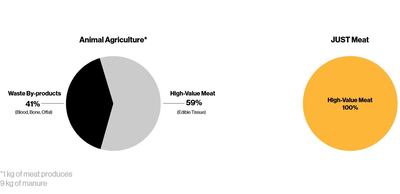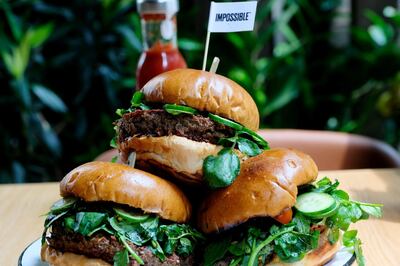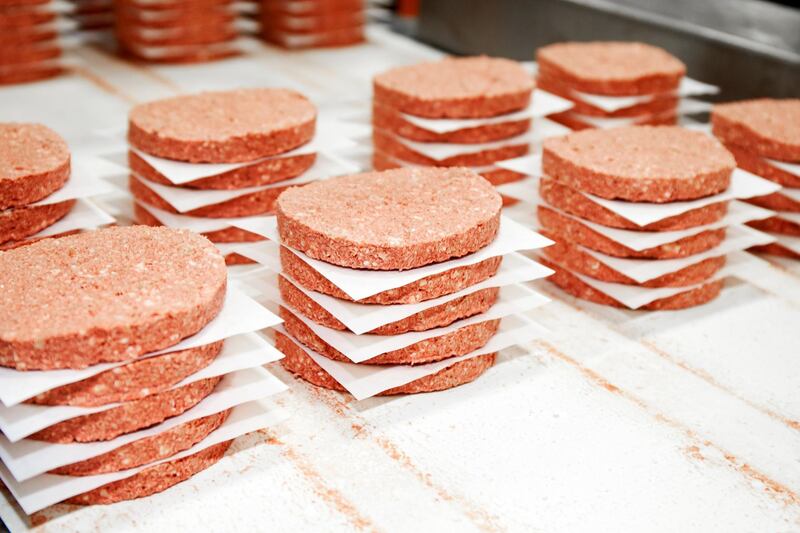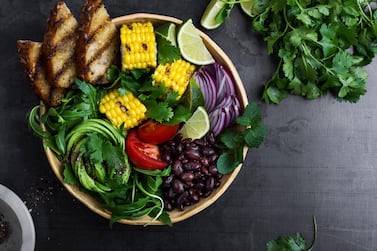It’s the year 2049. A family is sitting down to enjoy their evening meal, served by their robotic butler. They comment on how busy the traffic is as cars hover past the window of their shipping container micro-apartment, before tucking into their lab-grown steak supper.
“Mummy, did you really used to eat animals that were once alive?” the young daughter asks. “Weird.”
A little too much to expect in 30 years? Perhaps. But the way we eat meat is changing, and lab-grown is the future, according to experts. In 1931, Winston Churchill predicted the world would be eating lab-grown meat by the 1980s. "We shall escape the absurdity of growing a whole chicken in order to eat the breast or wing, by growing these parts separately under a suitable medium," he wrote in his essay entitled Fifty Years Hence.
While his prediction may have been 40 years out, Churchill was on to something – a feat scientists have been trying to achieve since the 1990s.
Lab-grown meat considered 'cleaner'
The first edible lab-grown sample – a fish fillet grown from goldfish cells – was produced in 2000. The following year, Nasa began funding research into growing meat from turkey cells so its astronauts could enjoy a Thanksgiving dinner in space.
These experimental attempts soon gave way to a culinary race, with companies vying to be the first to bring "clean meat" to the mass market. That race is now entering its final lap, with the front runners predicting they could have cultured meat on restaurant menus by the end of this year, once a regulatory framework is agreed upon.
"Step one is producing products like nuggets, ground chicken and ground beef; that's the way to think about the path of cultured meats," explains Joshua Tetrick, chief executive of San Francisco's Just, Inc. After successfully finding a plant-based alternative to the conventional egg in the form of a scrambled mung bean, Just turned its attention to cultured meats, and is now one of the companies leading the way. "The next stage will be the more structured products – think steaks and chicken breasts. Products like that require a lot more development; they are a little bit further out."

But just how far out are we talking? In June, global consultancy AT Kearney predicted that by the year 2040, 60 per cent of all meat consumed globally would not come from slaughtered animals. Rather, the bulk of our diets will be made up of a mix of cultured and plant-based meat substitutes.
This timeframe was reached through a series of interviews with industry experts, as well as by looking at the amount of recent investment from around the globe in sustainable meat alternatives – $1 billion (Dh3.6bn) in the last year. “The large-scale livestock industry is viewed by many as an unnecessary evil,” the report says. “With the advantages of novel vegan meat replacements and cultured meat over conventionally produced meat, it is only a matter of time before they capture a substantial market share.”
Reason versus reality
But will that "substantial market share" ever be enough to topple the 2.4-million-year-old human habit of eating slaughtered animals, an industry that last year alone turned over $1 trillion worldwide? "The problem with cultured meat is it's just hypothetical for the most part right now," says Tetrick. And the concept of eating flesh grown by scientists in a lab is, understandably, acutely alien in the minds of many. "There have been a lot of surveys done, and people are seemingly becoming more accepting," he adds, "but a survey is not the same as putting it on a menu or in a grocery store – that's totally different."

The growing process is a complicated one, which involves harvesting stem cells from the tissue of an animal (without causing it any harm) and culturing these cells inside a bioreactor with nutrients that allow them to grow just as they would inside the body. High-performing cells are then placed in flasks with a liquid – made up of 99 per cent water – that feeds them, while a machine shakes the cells to encourage growth. It’s a process that takes time, space, and above all, serious investment, if it is to succeed on the ambitious scale imagined by the likes of AT Kearney. And companies such as Just believe that investment could come from countries with both the capital and a vested interest in food security. Countries such as the UAE.
Cultured meat in the UAE
“Look at the numbers – about 70 per cent of the meat eaten in the UAE is imported,” says Tetrick, who six months ago sat down with the UAE’s Minister of State for Food Security to “explore options”. These options, he says, involve building manufacturing facilities capable of producing cultured meat or extracting plant proteins, which would offer high-value jobs, greater food security, and mark the start of a new transformative industry.
“I think the country or countries that figure this out are going to end up doing something pretty important,” he adds. “In the UAE, there does seem to be a willingness and openness to at least begin the process to explore it.”

But will meat eaters have that same openness? AT Kearney’s report estimates 35 per cent of all meat eaten by 2040 will be cultured, acting as the bridge between steadfast carnivores and a more ethical, environmentally friendly way of life. In a more distant future, Tetrick sees that figure rising closer to 80 per cent. “If we can figure out a way to make this stuff taste really good, if we can call it meat - because we think that is really important from an identity perspective - and also drive the cost down, there’s a real opportunity to make this a big thing,” he says.
Vegan meat is a hit
A further 25 per cent of the market, AT Kearney predicts, will be vegan meat replacements. "The shift towards flexitarian, vegetarian and vegan lifestyles is undeniable, with many consumers cutting down on their meat consumption as a result of becoming more conscious towards the environment and animal welfare," says Gerhardt. This pattern is clear to see. A record 250,000 people around the world signed up to take part in Veganuary earlier this year, and a quarter of Americans between the ages of 25 and 34 now consider themselves vegan or vegetarian. These changing diets have forced the food industry's hand, with more vegan options than ever before, particularly when it comes to the rapidly growing business of mock meat.

Beyond Meat and its eerily realistic bleeding burger, made from pea and rice protein, raised $240m after going public in May, and has seen its shares more than double since. Impossible Foods just partnered with Burger King in the US to trial its first meat-free patty, the Impossible Whopper. It also announced its first fish-less fish product – part of Impossible's drive to have a meat-free alternative for every type of protein on the market by 2035.
Not only do these imitations resemble real meat in texture and flavour, they also score relatively high in the nutrition department. While a traditional beef burger will provide roughly 280 calories to an average of 255 for a plant-based alternative, the protein levels are extremely similar, at about 19g, while the fat levels for the meat replacements are slightly less, an average of 17g to beef's 23g. It's not a straight match, however, with mock meat containing higher levels of carbohydrates and sodium. Still, the nutrition offered should be enough to silence protein devotees, providing them their daily fix without the need for animal involvement.
Most major burger joints in the UAE now offer some form of faux-meat patty, with BurgerFuel the latest to diversify its menu with the Beyond Beleaf vegan patty. In the UK, the introduction of a vegan sausage roll at fast-food chain Greggs caused nationwide chaos, with queues around the block and widespread shortages. It's been a slow and steady rise, but 2019 has marked the year veganism officially became mainstream.
But for those who pledge lifelong meat devotion, is cultured meat the answer? “If there is food that tastes good, is affordable, and good for the body, you end up solving a lot of things,” offers Tetrick. “You help solve climate change, you help solve food security - you solve a lot of issues. That’s what we are betting on.”








